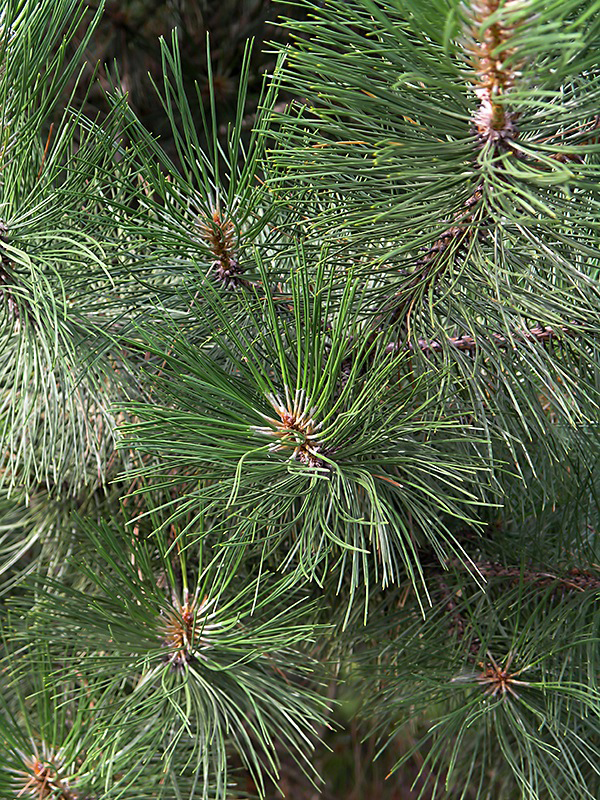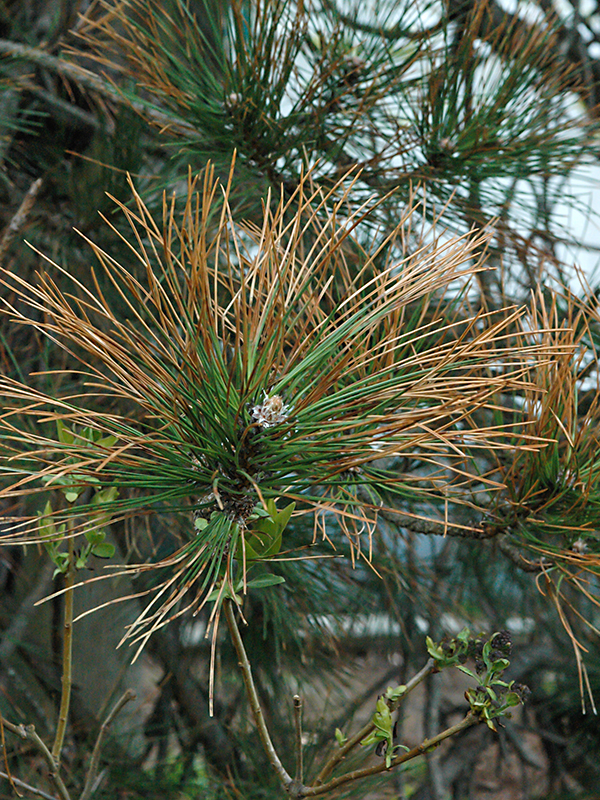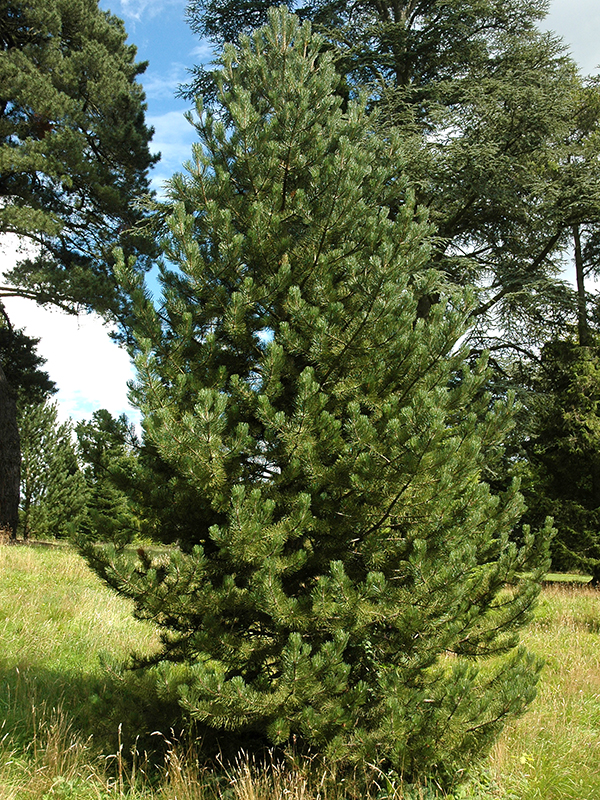| General Description | Large evergreen that grows very dense and pyramidal in form. In North America it is often planted as screens and windbreaks along roads as it is pollution tolerant. |
| ID Characteristic | It has some of the longest needles of the 2-needled pines, they are stiff but do not break when a palm test is preformed. |
| Shape | Densely pyramidal becoming irregular and umbrella-shaped with age. |
| Landscape | Often used as a screen and windbreak because of its dense form,it is widely planted in mass plantings, as they are quite pollution tolerant. |
| Propagation | Propagated via seed during October – November often being planted in late autumn and early spring. Seeds can be cold stratified for 60 days to accelerate germination. |
| Cultivation | Plant in full sun, tolerates some shade, a variety of soil types, but does best in moist loam soils. |
| Pests | Susceptible to Diplodia tip blight. |
| Notable Specimens | Fanshawe College London, Ontario, Canada. A.M. Cuddy Gardens, Strathroy, Ontario, Canada. Westonbirt, The National Arboretum, Tetbury, Gloucestershire, England. |
| Habitat | Found throughout Europe in areas with rich soil and a moist climate. |
| Bark/Stem Description | Dark brown grey furrows with flattened ridges. |
| Flower/Leaf Bud Description | Cylindrical, 1 - 2.5 cm long, sharp pointed with pale brown resinous scales. |
| Leaf Description | A 2-needle pine, needles 8 - 16cm long, they are stiff but do not break cleanly in half. |
| Flower Description | Staminate clustered, yellow; pistillate yellow green. It is cylindrical in shape and approximately 2 cm in size. They are pollinated from May to June then dry up and drop off within a few weeks. |
| Fruit Description | Conical, 5 - 7.5 cm long, 2.5 - 3 cm wide clusters of 2 - 4 at right angles to the branch. They are yellow-green pre-ripening, turning light brown in maturity generally from September through November of the second year. |
| Colour Description | The needles are dark green. The bark is dark brown to dark grey and the cones start out yellow eventually becoming reddish brown. |
| Texture Description | It is a smaller dense pine than other species, irregular in shape and texture turning umbrella like when reaching maturity. |


